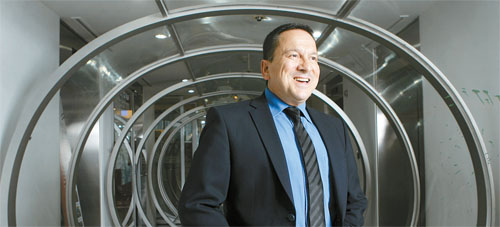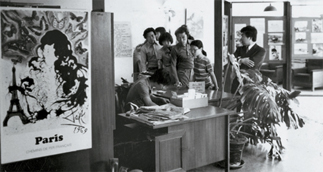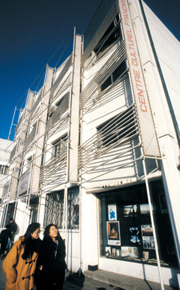Pioneering French house of art

Jean-Luc Maslin, the director of the French Cultural Center.By Jeong Chi-ho
The phenomenon came as an unusual event. The 1960s is often considered the heyday of Korean cinema.
The average number of local moviegoers reached record-breaking numbers from 1966 to 1970, according to a local media source. An average of 200 Korean films were shot and released per year. Even then, the films released in local theaters only helped to raise the demand for European arthouse cinema here.
The reason was clear: Films in local theaters were heavily controlled and censored by the government, and the majority were Hollywood features or anti-communist Korean films.
“There was a certain beauty in the idea of visiting the center’s organized screenings back in those days,” recounts Jeong Ji-young, director of historical epics like “White Badge” and “South Korean Army (Nambugun)” among others. “You had to be in a certain place at a certain time of day to watch those films. There was a definite sense of cultural desire.”

The former French Cultural Center in Sagan-dong across from Gyeongbok Palace, left, and right, inside the center. [JoongAng Ilbo]
The center had an unparalleled influence on the local arts scene, especially in film. The place started with 3,000 books, 600 films and five employees. By the mid 1970s, over 400 people visited the place every day and the center’s cinematheque held daily screenings, four times a day.
“On a good day, I remember visitors would line up from Sagan-dong to the intersection of Insa-dong,” says one observer who is affiliated with the center. “Police would approach us to control the traffic. Many of the visitors then make up the Korean film industry now. The center built a foundation for Korean cinema.”
Jean-Luc Maslin, the director of the French Cultural Center, agrees. During the 1970s and 1980s, he believes blooming social liberalization and rise of tolerance at home led to the peak of cultural diplomacy abroad, especially in Asia.

That role has changed over the past few years as overseas content has become more common.
The cultural attitude toward academicism, which typically dominates French films and literature here, demands a different approach to reach audiences. In a way, the center has entered a new phase.
“We’re no longer some special place with unique content anymore,” he says. “But we keep doing our best to satisfy the curiosity and thirst for knowledge among the people here.”
By Park Soo-mee Staff Reporter[myfeast@joongang.co.kr]










with the Korea JoongAng Daily
To write comments, please log in to one of the accounts.
Standards Board Policy (0/250자)